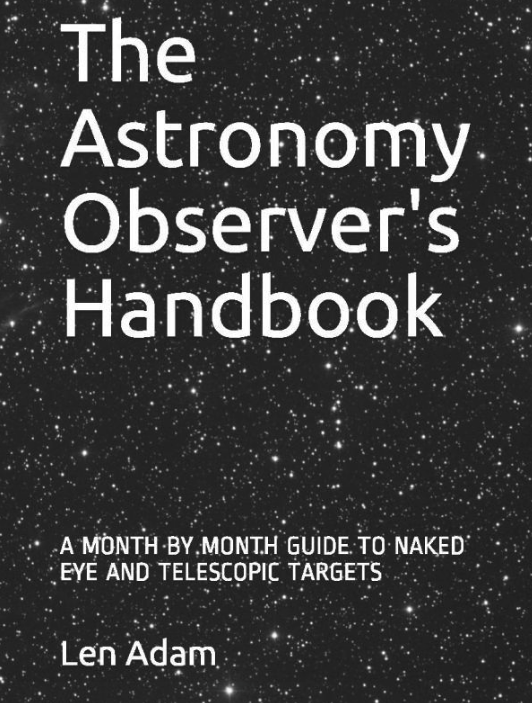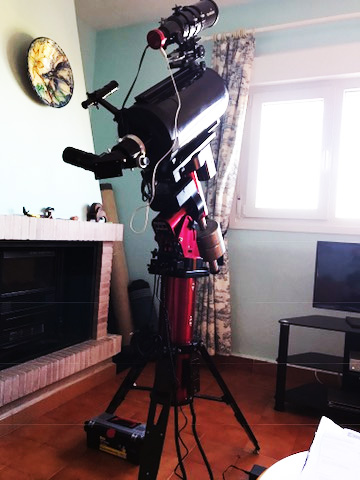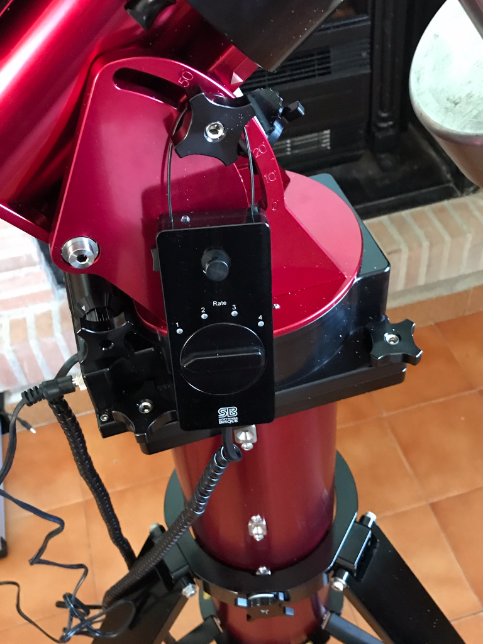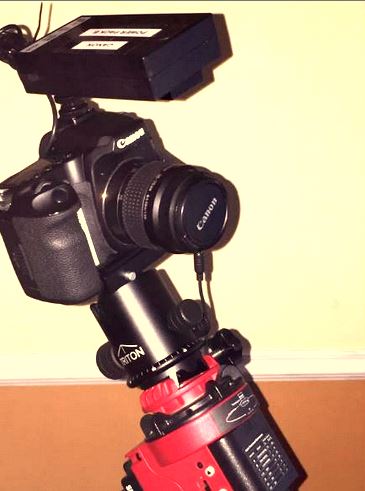A good day yesterday - Philae landed - 3 hours of clear sky observing - worked out how to add APASS data in SkyX to any field of view!
 Thursday, November 13, 2014 at 7:21AM
Thursday, November 13, 2014 at 7:21AM M31Last night was clear and I used the 4 inch refractor with my SBIG Camera to image some interesting objects. Having aligned the mount I connected it to the SkyX. This controlled both the camera and the CGEM mount. When I slewed the scope sometimes it was very accurate pointing but sometimes it missed the object completely but was close. This was easily fixed by solving the incorrectly placed image and then synchronising the mount with the centre of the image taken I then reslewed to the target
and it would be dead centre. I took the image of M31 on the left at 2.13 a.m. this morning - the last object I imaged before I had to stop to get some sleep. The plate solution details are shown. This tells me that the positioning of the camera is only 7 minutes away from the North-South line - can't really get better than that! The field of view of M31 (and all of the following images taken last night) is 54 minutes by 54 minutes - so almost a square degree. The plate scale is 6.33 arcseconds per pixel. I usually use this camera with my Celestron 14 which has a plate scale of 1.44 arcseconds per pixel.
M33North is up in this image with east to the left. The bright object at the bottom is the companion galaxy M32. The other companion galaxy M110 is not visible in this image. S J O'Meara has a sketch of M31 in his book "The Messier Objects" which is very similar to this image.
I also imaged M33 on the right last night - one of my favourite objects. It is located in the constellation of Triangulum
The chart shows its location - the actual image is placed in the chart to scale to show its size. M33 is smaller than M31 but usually more detail shows as its central area is not as bright as M31. The M33 image was taken at 2.03 a.m. this morning. It is usually referred to as the Pinwheel galaxy. It is about 2.3 million light years away. This is a 60 second image with no guiding. M33 is a member of our local group. Burnham devotes several pages to M33 and reports that it was found by Messier in August 1764.
The next object is the open cluster M35 in Gemini. I took this image at 1.56 a.m. this morning. Burnham M35comments that it is "visible in opera glasses as a nebula" and that Messier recorded it in August 1764 - as M33 above. Of course this is a clusyter within our own Galaxy so is considerably nearer than M33 - less than 3000 Light Years as opposed to less than 3 million for M33!! North is up and east is to the left in this image. As I know the diameter of this field is 54 minutes of arc from the plate solution I can estimate the diameter of this cluster to be about 30 to 40 minutes - hard to know where to draw the circle! The smaller cluster at the bottom right is NGC 2158 - another galactic star cluster like M35 - but in reality much further away. The Simbad database gives a distance of 8472 parsecs which is about 27000 light years - 8 or 9 times the distance of
M36M35.
At 1.48 a.m.I took an image of M36 in Auriga (left). Another galactic cluster with a diameter of 10 to 15 arc minutes or so - sitting on the Milky Way along with the two other clusters I always associate with M36 - i.e. M37 and M38. M36 was discovered in the 18th century and according to Burnham contains about 60 stars with magnitudes between 9 and 14.
To be continued......
 [Your Name Here] | Comments Off |
[Your Name Here] | Comments Off | 







